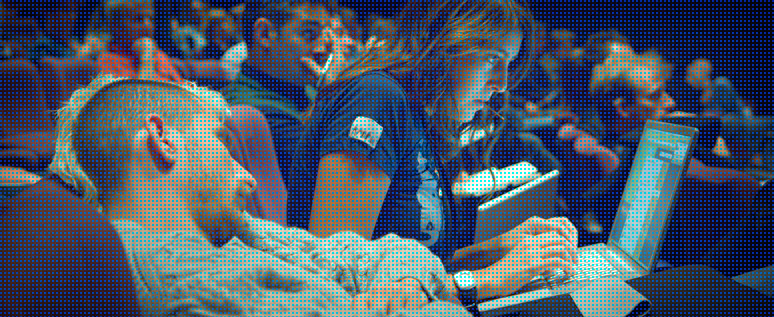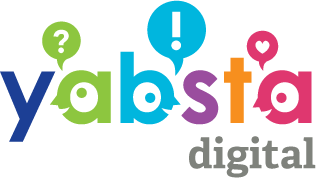
Posted on: June 25, 2013
Posted by: Darryl Jonckheere
Categories:
SEO Content Strategy and tagged
digital strategy,
UX
Not long ago, before the Web became a permanent fixture of the media sphere, people took perhaps more time to read and absorb information. The digital world has created a never ending array of information resources and also its fair share of time-wasting distractions catering to just about every niche interest imaginable. Reaching your audience has never been more challenging; standing out from the sea of clutter and sifting through the noise has become a daunting proposition for businesses entering the digital space.
 The growing influx of media choices at our disposal now includes social networks (take your pick), mobile apps, Netflix, DVRs, Youtube, and much, much more. These services and platforms are all competing for a narrowing slice of the audiences’ attention in what many experts agree is an increasingly fragmented media landscape. Not surprisingly, with so many media and information options available attention spans are getting shorter leading to the popular notion we’re reading less and skimming text (on Web pages) as opposed to reading pieces fully from beginning to end.
The growing influx of media choices at our disposal now includes social networks (take your pick), mobile apps, Netflix, DVRs, Youtube, and much, much more. These services and platforms are all competing for a narrowing slice of the audiences’ attention in what many experts agree is an increasingly fragmented media landscape. Not surprisingly, with so many media and information options available attention spans are getting shorter leading to the popular notion we’re reading less and skimming text (on Web pages) as opposed to reading pieces fully from beginning to end.
Jakob Nielsen, a Web usability expert, conducted a study back in 2008 and found that Web audiences (at the time) were reading just 28% of the words on the average Web page. In an earlier 1997 study, Nielsen performed research on how people read websites and found an astonishing 79% of test users scanned any new page they came across, with just 16% of test users reading word-by-word.
A more recent 2013 study by analytics vendor Chartbeat reviewed several high-traffic Web sites including Slate Magazine and found that most visitors would scroll through upwards of 50 to 60% of an article page, suggesting audiences were reading less than 1/3 of the text on any given page, or at least on the specific Web pages tested.
So clearly this isn’t a new trend. But what’s perpetuating this behavior?
Interestingly back during the Web 1.0 era the typical Web page layout was probably somewhere in the neighbourhood of 80 to 90% text-to-image. Today, thankfully, excruciatingly slow dial-up internet connections are largely a thing of the past and the ratio of text-to-image based content is arguably skewed in the opposite direction in favor of “rich media”. Things like streaming audio and video, motion-graphic banner ads, interactive info-graphics and games. The Web is is clearly becoming a more visually oriented medium, in many ways resembling television, though more participatory in nature.
Twitter, of course, is the poster child for the new brevity of communication that has become so prevalent in the social media sphere. Got something to say? You’ve got 140-characters or less. Don’t have time to write a comment? You can always Like or Pin a response instead; retweet and reblog to your heart’s content. And now there’s Vine, a sort of Twitter meets YouTube social app that allows users to post and share videos that have a maximum length of just 6 seconds.
Digital media consumption behaviours are clearly changing as is the way we’re communicating with one another through the wireless-everywhere-Web. In many ways ubiquitous internet access coupled with greater bandwidth speeds has ushered in a culture of immediacy in which people now expect an instantaneous flow of information. The Web is an active medium in which audiences are engaged with content and want to go from site to site, post to post, Tweet to Tweet, and get things done. But the question remains: are audiences reading?
In my next post I’ll explore a number of design and content strategies you can employ to connect with these text-skimming site-jumping time-strapped digitally distracted audiences. Stay tuned.
Image credit: Power to the Pixel
Not long ago, before the Web became a permanent fixture of the media sphere, people took perhaps more time to read and absorb information. The digital world has created a never ending array of information resources and also its fair share of time-wasting distractions catering to just about every niche interest imaginable. Reaching your audience has never been more challenging; standing out from the sea of clutter and sifting through the noise has become a daunting proposition for businesses entering the digital space.
 The growing influx of media choices at our disposal now includes social networks (take your pick), mobile apps, Netflix, DVRs, Youtube, and much, much more. These services and platforms are all competing for a narrowing slice of the audiences’ attention in what many experts agree is an increasingly fragmented media landscape. Not surprisingly, with so many media and information options available attention spans are getting shorter leading to the popular notion we’re reading less and skimming text (on Web pages) as opposed to reading pieces fully from beginning to end.
The growing influx of media choices at our disposal now includes social networks (take your pick), mobile apps, Netflix, DVRs, Youtube, and much, much more. These services and platforms are all competing for a narrowing slice of the audiences’ attention in what many experts agree is an increasingly fragmented media landscape. Not surprisingly, with so many media and information options available attention spans are getting shorter leading to the popular notion we’re reading less and skimming text (on Web pages) as opposed to reading pieces fully from beginning to end.
Jakob Nielsen, a Web usability expert, conducted a study back in 2008 and found that Web audiences (at the time) were reading just 28% of the words on the average Web page. In an earlier 1997 study, Nielsen performed research on how people read websites and found an astonishing 79% of test users scanned any new page they came across, with just 16% of test users reading word-by-word.
A more recent 2013 study by analytics vendor Chartbeat reviewed several high-traffic Web sites including Slate Magazine and found that most visitors would scroll through upwards of 50 to 60% of an article page, suggesting audiences were reading less than 1/3 of the text on any given page, or at least on the specific Web pages tested.
So clearly this isn’t a new trend. But what’s perpetuating this behavior?
Interestingly back during the Web 1.0 era the typical Web page layout was probably somewhere in the neighbourhood of 80 to 90% text-to-image. Today, thankfully, excruciatingly slow dial-up internet connections are largely a thing of the past and the ratio of text-to-image based content is arguably skewed in the opposite direction in favor of “rich media”. Things like streaming audio and video, motion-graphic banner ads, interactive info-graphics and games. The Web is is clearly becoming a more visually oriented medium, in many ways resembling television, though more participatory in nature.
Twitter, of course, is the poster child for the new brevity of communication that has become so prevalent in the social media sphere. Got something to say? You’ve got 140-characters or less. Don’t have time to write a comment? You can always Like or Pin a response instead; retweet and reblog to your heart’s content. And now there’s Vine, a sort of Twitter meets YouTube social app that allows users to post and share videos that have a maximum length of just 6 seconds.
Digital media consumption behaviours are clearly changing as is the way we’re communicating with one another through the wireless-everywhere-Web. In many ways ubiquitous internet access coupled with greater bandwidth speeds has ushered in a culture of immediacy in which people now expect an instantaneous flow of information. The Web is an active medium in which audiences are engaged with content and want to go from site to site, post to post, Tweet to Tweet, and get things done. But the question remains: are audiences reading?
In my next post I’ll explore a number of design and content strategies you can employ to connect with these text-skimming site-jumping time-strapped digitally distracted audiences. Stay tuned.
Image credit: Power to the Pixel
 The growing influx of media choices at our disposal now includes social networks (take your pick), mobile apps, Netflix, DVRs, Youtube, and much, much more. These services and platforms are all competing for a narrowing slice of the audiences’ attention in what many experts agree is an increasingly fragmented media landscape. Not surprisingly, with so many media and information options available attention spans are getting shorter leading to the popular notion we’re reading less and skimming text (on Web pages) as opposed to reading pieces fully from beginning to end.
The growing influx of media choices at our disposal now includes social networks (take your pick), mobile apps, Netflix, DVRs, Youtube, and much, much more. These services and platforms are all competing for a narrowing slice of the audiences’ attention in what many experts agree is an increasingly fragmented media landscape. Not surprisingly, with so many media and information options available attention spans are getting shorter leading to the popular notion we’re reading less and skimming text (on Web pages) as opposed to reading pieces fully from beginning to end.



